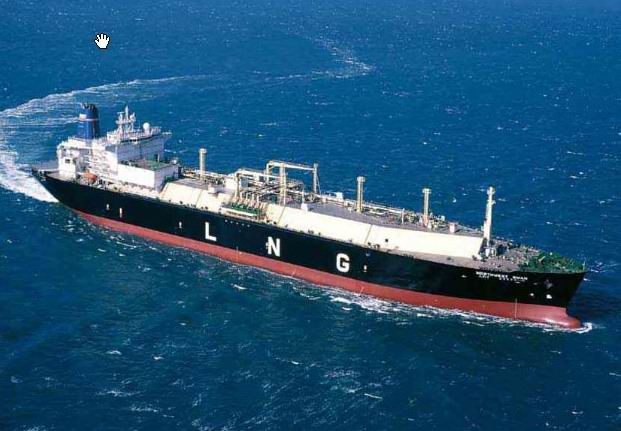| Home › Applications ›
Marine › Marine Fuels › Gas |
Marine Gas
|
1. Natural Gas
Natural gas, a fossil fuel composed of mostly methane, is one of the cleanest burning alternative fuels. It can be used in the form of Pipeline natural gas (PNG) , Liquefied natural gas (LNG) and Compressed natural gas (CNG) to fuel power generation, ship and vehicles. Natural gas is obtained from a wide range of sources and may differ not only in composition and processing, but also in energy content. The main component is methane (CH4); it usually constitutes between 75-99%, but deviations are not unusual. Natural gas contains small amounts of ethane, propane, butane and ethylene.
Natural gas is commonly supplied via pipeline or a gas infrastructure, but thanks to recent developments it can be liquefied easily and economically. Consequently, it can be transported as LNG by vessels all over the world.
There are different types of natural gas depending on the composition. H-gas (high calorific gas) is gas with a high content of energy and methane. L-gas (low calorific gas) has a lower content of energy and methane but higher amounts of nitrogen and carbon dioxide. Of course, these types of natural gas have different characteristics in terms of combustion ( see the gas fuel specification below).

Liquified Natural Gas (LNG) |

Liquefied Petroleum Gas (LPG) |
|
2. Liquefied Petroleum Gas (LPG)
LPG is a kind of clean-burning fossil fuel that can be used to power internal combustion engines. It is a mixture of propane and butane, usually accompanied by a small amount of propylene and butane. A strong odorant ethyl mercaptan are added into liquefied petroleum gas, so the LPG leakage can easily be found. LPG is mainly used as petrochemical feedstock for ethylene cracking of hydrocarbons or steam reforming to syngas, and used as fuel for industrial, civil and power generation.
For use of natural gas in our engines, the gas must comply with the general applicable specifications for natural gas, the specific MDT requirements, be clean, dry and cooled (free of water, hydrocarbon condensate and oil) when fed to the engine.
If you are in doubt about your gas quality, do not hesitate to contact us. Our well equipped laboratory can check your fuel and inform about the best suited our engine.
|
| Appendix:Natural gas specifications |
|
Item |
Unit |
Properties |
|
Calorific value (LHV), Min. |
kJ/Nm³ |
32,400 |
|
Methane number |
- |
≥70 |
|
Hydrogen sulphide content (H2S) |
mg/Nm³ |
5 |
|
Total sulphur content |
mg/Nm³ |
30 |
|
Particle concentration, Max. |
mg/Nm³ |
50 |
|
Particle size |
µm |
10 |
|
Total fluoride content |
mg/Nm³ |
5 |
|
Total chlorine content |
mg/Nm³ |
10 | |
Note:
1. Nm³ corresponds to one cubic meter of gas at 0 °C and 101.32 kPa.
2. All data provided on this site is for information purposes only, explicitly non-binding and subject to changes without further notice
|
|
| | |